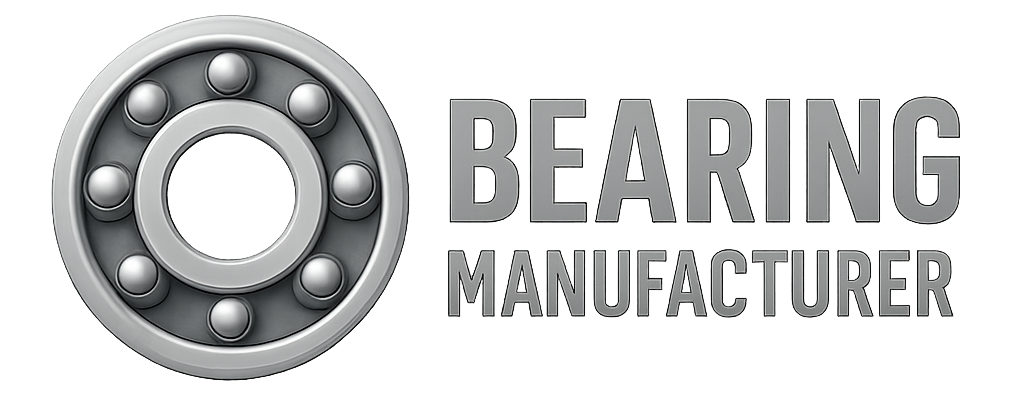Ceramic bearings offer excellent performance in demanding environments—but keeping them clean is essential for ensuring their full potential. This guide will walk you through everything you need to know about cleaning full ceramic bearings and hybrid ceramic bearings, from tools and steps to lubrication and reinstallation.
Understanding Ceramic Bearings
Ceramic bearings are known for their high performance, corrosion resistance, and low friction. There are two major types:
1. Full Ceramic Bearings
-
Construction: Both races and balls are made from ceramic (typically silicon nitride or zirconium dioxide).
-
Advantages:
-
Exceptional corrosion resistance
-
Operates in high-temperature and vacuum environments
-
Electrically insulating and non-magnetic
-
-
Applications: Aerospace, medical, semiconductor, vacuum equipment.
2. Hybrid Ceramic Bearings
-
Construction: Ceramic balls (usually Si3N4) with steel races.
-
Advantages:
-
Lower friction and weight than full steel
-
Higher load capacity than full ceramic
-
Lower in cost than full ceramic ball bearings while outperforming all-steel designs.
-
-
Applications: Electric motors, high-speed spindles, bicycles, skateboards.
How to Clean Full Ceramic Bearings
Materials Needed:
-
Gloves and eye protection
-
Soft-bristled brush (e.g., toothbrush)
-
Lint-free cloth
-
Clean water or ceramic-compatible bearing cleaner
Cleaning Steps:
-
Disassemble the bearing from its housing.
-
Brush off loose debris using a dry brush.
-
Rinse with tap water or soak in a ceramic-safe cleaning solution.
-
Rinse thoroughly to remove all residues.
-
Dry completely using a lint-free cloth and air-drying.
Optional Lubrication:
-
While full ceramic bearings are often self-lubricating, applying a small amount of ceramic-compatible oil may further reduce wear in specific use cases.
Reinstallation Tips:
-
Ensure the bearing is 100% dry before reassembly.
-
Avoid misalignment or overtightening during installation.
Maintenance Advice:
-
Perform visual inspections regularly.
-
Avoid shock loads or harsh handling—ceramic is hard but brittle.
How to Clean Hybrid Ceramic Bearings
Tools You’ll Need:
-
Bearing cleaner or isopropyl alcohol
-
Small container for soaking
-
Brush and lint-free cloth
-
Tool for seal/shield removal (e.g., needle or small screwdriver)
-
Compatible lubricant (light oil, not grease)
Cleaning Steps:
-
Identify closure type (rubber seals or circlip shields).
-
Carefully remove the shields or seals.
-
Soak the bearing and components in cleaning fluid.
-
Gently scrub the races and balls using a soft brush.
-
Rinse all parts in fresh alcohol or cleaner.
-
Dry thoroughly using cloths or compressed air.
-
Inspect for cracks, pitting, or irregular rolling.
Lubrication:
-
Apply a light coating of ceramic-safe oil.
-
Rotate to ensure even distribution.
Reassembly:
-
Reinstall shields or seals gently to avoid deformation.
-
Ensure the circlip snaps securely into place if used.
Testing:
-
Spin the bearing by hand—ensure smooth, noise-free rotation.
Maintenance Frequency:
-
Clean every 2–3 months depending on environment.
-
Store in dry, sealed containers when not in use.
Full Ceramic vs. Hybrid Ceramic Bearings Comparison
| Feature | Full Ceramic Bearings | Hybrid Ceramic Bearings |
|---|---|---|
| Material | Ceramic balls & races | Ceramic balls, steel races |
| Corrosion Resistance | Excellent | Good |
| Temperature Resistance | Very High | High |
| Magnetic | Non-magnetic | May be magnetic (steel races) |
| Electrical Insulation | Yes | No |
| Weight | Lightest | Moderate |
| Cost | Higher | More affordable |
| Best For | Extreme environments | High-speed, cost-sensitive uses |
When to Seek Expert Help
DIY cleaning is fine for consumer applications like cycling or skating. However, for industrial, high-value, or precision environments, it’s recommended to consult professionals. Bearing Maker offers expert support and product guidance for a wide range of ceramic bearings.
Conclusion
Keeping ceramic bearings clean isn’t just about aesthetics—it’s about preserving performance, minimizing friction, and extending service life. By understanding the cleaning differences between full ceramic and hybrid ceramic bearings, and applying the right method for each, you ensure optimal operation in any application.
